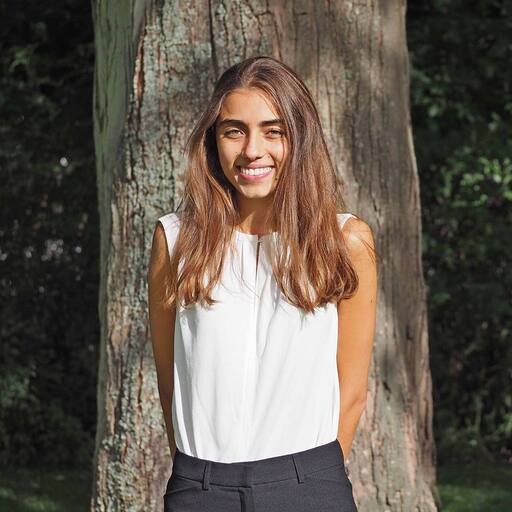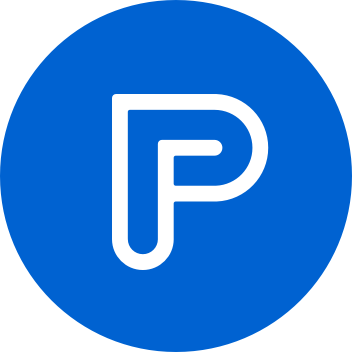There is a wide variety of product professions, depending on the context of a company. While the product manager's job is becoming increasingly standardised, the product designer's job is still little known and poorly understood as a whole.
We therefore wanted to ask the main people involved, as well as their colleagues in product management, to shed some light on this very useful profession, and the way it fits into the daily life of PMs.
Hats off to these wonderful contributors:
- Fabiano Bernardo, Product Designer at MetaLab
- Marie-Aline Millot, Product Design Ops at Agicap
- Camille Billard-Madrières, Senior Product Manager at PlayPlay
- Mehdi Soliman, Product Director at PayFit
Product Design In France
First of all, let's take a look at the Product Design profession in France.
Coming straight from the US a few years ago where it reigns supreme at Big Tech companies, the design profession is struggling to scale in the same way here.
In the Anglo-Saxon world, the product designer is a person who has a strong impact internally and on the product. Perceived as a real added value for the company, he/she is trusted completely and is very involved in the business side of things. This dimension is an integral part of the job over there, which is still lacking in France because schools tend to teach a lot on theory and too little on practice and business issues. Indeed, where our English and American friends have understood the value of including product design in squads at the same level as developers and PMs, we French still think too much of it as interface design.
Some people clearly stand out from the crowd and have understood the benefits of having PMs and product designers work at the same level by forming "balanced" squads (or tribes, depending on the organization). But let's be honest, most of them still work the old-fashioned way, with one product designer for several PMs! Besides, this poor designer is still too often summed up only by his/her UI skill, with a few touches of UX here and there...
As proof, we no longer count the number of times we are asked:
"I would like a Product designer... we have a big need on interface production!" 🤯
This sentence alone shows the extent to which Product Design is still misunderstood in France!
But as Product Designer Fabiano says so well:
"We are not (only) screen factories!" 😆
The Product Manager <-> Product Designer interaction is a daily relationship
At least, it should be!
And that means first of all creating a real partnership, with collaboration and a lot of communication.
For Fabiano, "the best way to work together is transparency".
When we talk to product managers, some of them (fortunately not the majority) still see the product designer as an executor or a resource. This is often linked to the context in which they evolve at the beginning of their career.
Product Manager Mehdi explains:
"When I started, the product designer was more someone I would call on at a moment's notice when I needed them. The relationship was not developed. To use an analogy, they were seen more as an 'internal service provider'."
What we see evolving in the right direction however, is the idea that the product designer is a real role that brings as much to the product as the PM, and not only in terms of design, but also and especially in terms of cross-functional communication and rituals to be carried out.
When he arrived at PayFit, Mehdi's vision of product design changed:
"Today, the designer is my partner, we do everything together!
And that has completely changed my way of working!"
Far from opposing each other, these two roles must, on the contrary, complement each other efficiently, performing a well-practiced "pas de deux" that is fluid enough to push the product as far as possible.
Product Manager Camille says:
"You shouldn't make rules left and right, but rather find a balance within the duo. No two are the same and that's okay!"
The product designer has the ability to contribute a great deal to the PM in their daily life, provided there is room to do so. And vice versa.
Product design ops Marie-Aline makes this very clear:
"A good PM is someone who is humble, who takes you along on the journey, explains the issues, is very receptive to challenges, a sponge that absorbs the good vibes and passes them on in a virtuous circle"
For Fabiano, the PM is a real driving force:
"They are the motivational engine in a squad, because the PM has more connections, and a broader vision of the company than the designer."
Mehdi agrees:
"The PM thinks about the vision and the trajectory to get there when the product designer brings that vision to life in a concrete way! A designer thinks about their project as a whole, and goes beyond their sole design scope!"
What about the Discovery phase?
There are so many overlaps between PM and designer, so much that it can be confusing for some! And yet, when we asked that question to our interlocutors, the answers, although different, were in the same vein!
For Marie-Aline, it must necessarily work "like a couple"!
"Overlap is not a problem as long as there is communication. Even if there is always one who will take the lead, it is very important that the pair is 60% of the time together to be aligned on understanding the problem."
Obviously, there are times when everyone has a role to play! The PM is there to bring the designer to a particular point with his/her business sensibility.
According to Camille, the PM has a role in organising the discovery phase, defining what the team is going to explore, and getting everyone up to speed. Product design is there to find the right solutions to problems and define focus times.
"For me, UX belongs to the design crew. It's the kind of job where you think it's simple and that anyone can do it. But it's a given that the PM can't do everything!"
"You shouldn't be afraid to go into each other's areas of expertise," adds Fabiano. Moreover, you musn’t focus on the border between the two professions, but think in terms of 'capabilities' so as to complement each other well!
Mehdi shared with us his experience of a successful pairing. At PayFit, the PM leaves the reins to the designer when it comes to defining the discovery phase, the process to be put in place to define the problem. The PM remains the "facilitator" ;they have a central role.
"I'm a challenger, I don't let the design go! And neither does he," Medhdi adds with a laugh. "That's when we can iterate and come up with the best possible solution!"
All four are unanimous: the relationship is key!
As Mehdi says: "You have to be able to tell the truth to each other without taking it personally. You have to know how to talk to each other, not be touchy and therefore trust each other!"
When can you do without product design?
"Never!" says product design ops Marie-Aline.
Product designer Fabiano, on the other hand, is more nuanced:
"Sometimes the designer can only have an advisory role. It depends on the subject, it just has to be clear!"
Product manager Camille remains pragmatic.
"I've already done a discovery phase on my own, and clearly, even though I have good UX skills, it's not at all the same as working with a designer. It's less rich, less deep.
In a mature product organisation like PayFit, the PM/Designer pairing is so strong that each can evolve without the other in complete freedom, while keeping the course. Says Mehdi:
"It should be normal and vice versa! The designer must also be able to do without PM. When the vision is acquired and aligned, it can go well."
In the end, is the Product Designer the future PM?
As you might expect, the answer is not so obvious, as it depends on the organisation.
In organisations that are mature in the "Payfit" way, some designers can manage a tribe independently. But where it is more complicated is when it comes to strategy and product vision, as this is not within the designer's remit.
In smaller organisations with a very strong product culture, we could envisage doing without a PM at the start by relying on the wide range of skills of the product designer.
We can take the example of Félix Lepoutre from Lydia, who carried the app for many years before the first PMs arrived. He was able to work in a very qualitative way because he had the whole context in mind and was strategically involved in the issues, without intermediaries. However, this requires delivery to be handled efficiently by the technical side so that the product designer can concentrate on the discovery phase.
The reverse is less obvious as the PM would not be used in the right way. In this respect, Mehdi explains that if we add the scope of design to the PM, we risk frustrating him or her because he or she will be less central and will have a more solo, « dreamer » kind of role.
"To me, PMs who do design are designers who ignore themselves."
Marie-Aline explains that she has often met PMs with a real UX/UI fibre. But even then, it's not sustainable in the long run.
"It can work in a given context, probably at start-up and a bit further! But it can't last if it scales because you need to know who is responsible for what. A PM has a role in a product team. We need him too much on his scope to spread him around."
That being, even in these organisations, most product designers in France lack business vision and data skills. In our opinion, the main cause lies in the French training and school curricula which focus too early on specialisation and not enough on the rest. The advantage of the Anglo-Saxon system is that it encourages students to look at other areas of study before choosing a major. This probably makes them better equipped to evolve in a company, in contact with professions other than their own, and thus are challenged in the right way.
For us, the answer to the question in our article cannot yet exist because product design is still far too 'young' in France to replace the product management function.
But the shortcomings of a training course can easily be mitigated by good work experience, and especially by a mentoring system.
Having a good mentor to accompany you in your practice, with the aim of gaining broader skills (business, tech, data), can be a real long-term asset for a product designer!
So dear friends, PMs and Designers, a piece of advice to conclude this column: first of all, learn to form a real pair from the beginning of your collaboration, an iconic duo that pulls each other up and lets one learn from the other!
The goal is not so much to be interchangeable but to have enough confidence in your colleague to offer the best of this collaboration to the Product you design!
And for this there is no magic recipe, but goodwill and maximum coordination from the start, hence the importance of being particularly attentive and vigilant when integrating and creating a team.
This article was originally written by Charlotte Usureau, co-founder of Pachamama.pm, HR expert and facilitator of business growth through people skill development.
Translated and republished with permission from all participants.
Header photo by İrfan Simsar / Unsplash


